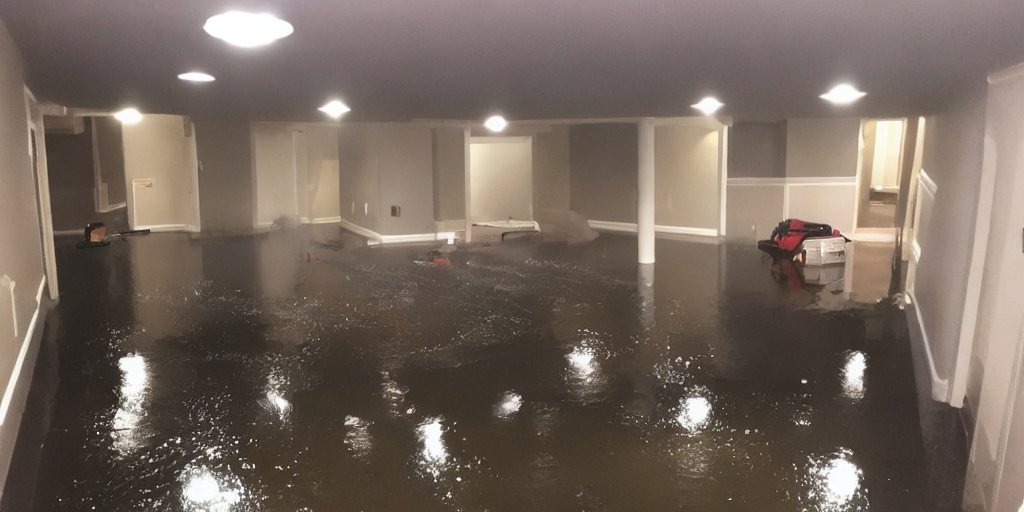Basements serve as valuable extensions of our homes, offering extra living space, storage, or recreational areas. However, they’re also susceptible to water damage, which can lead to serious structural issues and health hazards if left unchecked. If you’re grappling with a damp or flooded basement, it’s imperative to engage professional basement water removal services promptly. In this comprehensive guide, we’ll explore everything you need to know about keeping your basement dry and safe.
Understanding the Importance of Basement Water Removal
Basement water issues can arise from various sources, including heavy rainfall, plumbing leaks, groundwater seepage, or improper drainage. Regardless of the cause, prolonged exposure to moisture can result in mold growth, rot, and compromised structural integrity. Moreover, damp basements create an ideal environment for mold and mildew, posing health risks to occupants.
Also Read: Basement Water Removal Service: A Comprehensive Guide to Tackling Moisture Woes
Cost Considerations for Basement Water Removal
The cost of basement water removal services can vary based on several factors, including the extent of the damage, the size of the basement, and the specific remedies required. On average, homeowners can expect to invest between $500 to $3000 for professional assistance. However, this cost is a worthwhile investment in safeguarding your property and ensuring a dry, healthy living environment.
Effective Methods for Basement Water Removal
When it comes to addressing water issues in your basement, employing the right techniques is crucial for success. Here are some effective methods for basement water removal:
- Sump Pump Installation: A sump pump is a critical component of basement waterproofing systems. It functions by collecting excess water and redirecting it away from your home’s foundation, thereby preventing flooding and water damage.
- Interior Drainage Systems: Installing interior drainage systems like French drains can help manage water infiltration and alleviate hydrostatic pressure around your basement walls. These systems effectively channel water away from the foundation, keeping your basement dry.
- Dehumidification: High humidity levels in basements can exacerbate moisture issues and promote mold growth. Installing a dehumidifier helps regulate humidity levels, reducing the risk of mold and creating a healthier indoor environment.
- Professional Water Extraction: For severe flooding or extensive water damage, it’s best to enlist the expertise of professional basement water removal services. These specialists have the necessary equipment and knowledge to extract water efficiently, mitigate damage, and restore your basement to its pre-flood condition.
Choosing the Right Basement Water Removal Service Provider

Selecting the right basement water removal service provider is paramount to achieving optimal results. Consider the following factors when making your decision:
- Experience and Expertise: Look for companies with a proven track record in basement water removal and restoration. Experienced professionals are equipped to handle various water-related issues effectively.
- Licensing and Insurance: Ensure that the company is licensed, bonded, and insured. This protects you from liability and guarantees that the work is performed to industry standards.
- Customer Reviews and Testimonials: Read online reviews and testimonials from previous clients to gauge the company’s reputation and customer satisfaction levels.
- 24/7 Emergency Response: Emergencies can occur at any time, so choose a service provider that offers round-the-clock emergency assistance for prompt intervention.
DIY Basement Water Removal Tips
While professional assistance is often necessary for significant water damage, there are steps you can take to mitigate the situation before help arrives:
- Safety First: Prioritize safety by turning off electrical power to the affected area to prevent the risk of electric shock.
- Remove Standing Water: Use a wet/dry vacuum or pump to remove standing water from the basement. Dispose of water properly to prevent recontamination.
- Dry Out the Area: Increase ventilation by opening windows and doors. Utilize fans and dehumidifiers to expedite the drying process and prevent mold growth.
Also Read: The Essential Guide to Basement Water Removal Service
Conclusion
Dealing with basement water issues can be stressful and overwhelming, but timely intervention is crucial to prevent further damage and ensure a safe living environment. By understanding the importance of basement water removal services and implementing effective strategies, you can safeguard your property and enjoy a dry, healthy basement for years to come. Remember, when it comes to water damage, swift action is key.
In conclusion, investing in professional basement water removal services is an essential step towards protecting your home and your family from the damaging effects of water infiltration. Don’t wait until it’s too late—take proactive measures to address basement water issues and preserve the integrity of your property.










